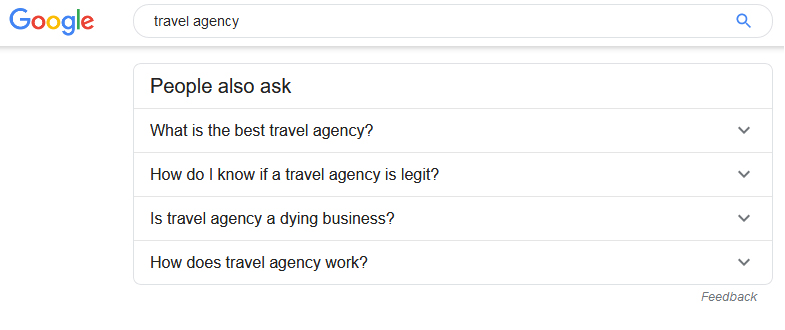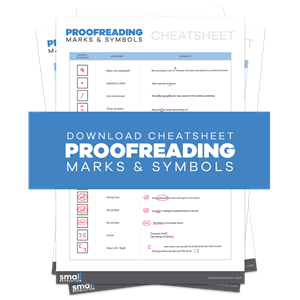As with any profession, copywriting requires skill and practice.
It’s like learning how to do push-ups: you have to master the form before getting fancy.
This article will take you through the rules and guidelines you need to think about from the moment you receive a client brief to the time you’re actually writing.
If by the end of this article you’re inspired to learn more, this is the best place to start.
Client Brief
All copywriting starts with a client brief that gives you all the information you need to do the job.
If you’re a freelancer, this comes in the form of an email or phone call from a client; if you work at an ad agency, it may be a note from your creative director.
Let’s say your client is a start-up travel agency that wants you to write a weekly blog for them. Their goal is to gain email subscribers and generate leads for their travel packages.
Here’s a list of questions you could ask during the first meeting:
- Who are you writing for (target audience)?
- Any specific CTAs I should include?
- What are the timelines and parameters (e.g., word count)?
- Do you have pre-set keywords or guidelines?
Ask as many questions as you need to in order to avoid pestering the client later on.
Beyond asking questions, try to understand the client’s brand on a deeper level. What are their brand values and differentiating factors, for example? This knowledge will significantly enhance the quality of your writing.
Research
Once you have established guiding parameters and what constitutes a clear win for your client, dig deeper.
Use tools like Moz to help you find and learn more about keywords and common terms used in your niche. Aim to have a good mix of high and low-value keywords.
You can also ask Google.
Look up the Related Questions box for terms like ‘travel agency’:

Note which words come up over and over, including triggers, pain points, and emotional language. If the client has an active social media page or comments section, observe and engage with their consumers there, too.
Research the competition, especially if they’re ranking in the Search Engine Results Pages (SERPs).
- What are they writing about?
- What are their keywords?
Find out what they’re doing and do it better. If they’re writing about Top 10 Budget Destinations, for example, then you should write a series of in-depth articles on How to Survive in Destination X for Y Days With Less Than $Z.
Important: Seize the moment by keeping up with trends, but only if you understand them and they’re relevant to the audience and brand.
Batching
Batching gives you room to work on one theme at a time, sorting all your ideas into outlines as you go. The output and quality of your work will significantly improve with this level of focus.
If the theme is traveling with kids, for example, generate a slew of ideas like these:
How to Travel with an Infant
How to Enjoy Vacations with Kids
How to Travel with Kids on a Budget
A Stress-Free Guide to Packing for Kids
…you get the point.
Jot down all your ideas, and then move on to the next phase:
Outline
Think of it as putting a line around your idea(s).
An outline ensures your articles stay on course and meet all the relevant checkpoints along the way.
1. Traveling with Family
a. Traveling with Kids
i. Traveling with Kids on a Budget
ii. Kid-Friendly Hotel Recommendations
b. Traveling with Teenagers
i. Youth Activities in Destination X
ii. How to Bond with Your Teens
c. Traveling as a Married Couple
i. Romantic Spots
ii. Date Activities
Once you have three or four solid ideas, you’re good to go.
Think about all the points you want readers to take away from your article. Do they naturally break up into different sections? If they don’t, drop the weaker ideas and bolster the others with more research.
Remember that the outline is a strategic roadmap to achieve client objectives, so it’s smart to reverse engineer from that standpoint. This is where relevant CTAs, internal links and information come in.
Ask yourself: what should the blog posts say in order to motivate readers to explore package options, contact the company and make a booking?
Learning how to write powerful, effective blog posts will turn you into a highly sought-after copywriter.
Writing Tips
Headline
- Did you know that 8 out of 10 people only read the headline?
- If the blog post is a fishing rod, the headline is the bait. It can’t just be nice; it has to be irresistible.
Introduction
- Elaborate what was promised in the headline with an interesting twist. This could be a fact, a statistic, a story, a question or even a quote.
- Inflame the reader’s desire or pain point (e.g., I want to travel, but I can’t afford it; how do I enjoy my vacation with kids, etc.)
The Main Body
- Give the reader tips on how to achieve their desire or alleviate their pain point.
- Use powerful words, avoid jargon and don’t repeat yourself.
- The most important part: Connect the value of the CTA to the value of the information you’re offering. When done right, the CTA feels like a value add-on to the reader.
Conclusion
- Offer a package/contact/subscription to close the deal. Focus on the benefits of the offer.
- Be more direct about your CTA. Tell them exactly what actions they should take.
Bonus Tips
- Let your copy ‘breathe’ for a day before going back for the final edits. You will find areas for improvement, guaranteed.
- Use Google Docs. It’s free and easy to share with clients.
Ready to kickstart your copywriting career?
Check out this comprehensive list of online job boards and our definitive copywriter salary guide.


